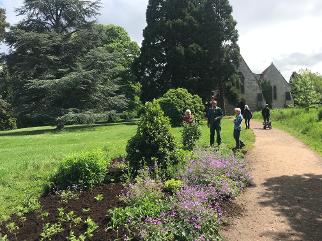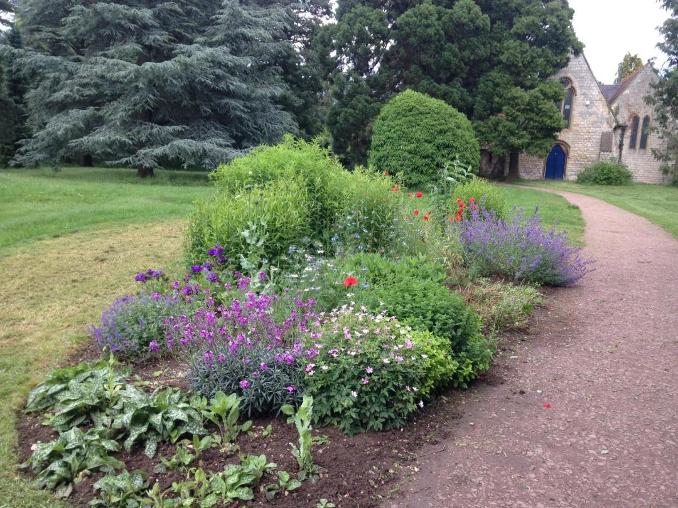Flowerbed in Barnwood Park

Flowerbed 2023
At the end of the spring 2022, the bed was revamped and some new plants introduced. These were all plants from the RHS pollinator list and therefore in keeping with our aim of creating a flower bed to improve the habitat for pollinating insects. A layer of farm manure compost was laid all through the bed. In October some small shrubs (Osmanthus, Potentilla and Spiraea) were planted along with some perennial plants (Euphorbia, Bergenia, Erysimum and Salvia). Sadly some of these did not survive the harsh winter but the bed continues to provide important habitat for pollinating insects.

Flowerbed 2022
Flowerbed 2021

Flowerbed 2019
Changes to the flower bed in Barnwood Park 2016/17
Several years ago Gloucester City Council teamed up with the Bee Guardian Foundation to increase habitat for bees across the city. This involved creating “urban wildflower meadows” – swathes of pollen and nectar rich annual flowers – along roadside verges and in parks as well as planting many more trees attractive to pollinators. The Friends of Barnwood Arboretum took over the care of the newly created flower bed in Barnwood Park after the first year and have continued to re-seed and weed it each year.
In 2016 we came to the conclusion that we could extend the season for pollinators by using (mainly) perennial plants. We hope that it will also be attractive to park visitors for a longer period. Initially we were planning to base our choice of plants on the RHS Perfect for Pollinators plant list. This is a huge list and we were still struggling to work out where to start when two of the Friends came across an interesting flower bed in a park in Tunbridge Wells. This flower bed was part of an experiment by the University of Sussex aimed at putting recommendations of bee and insect friendly garden plants on a firmer scientific basis. We are very grateful to Professor F. Ratnieks of the University of Sussex, who told us the results of an earlier stage of the project and even invited us to take part in the current stage. (There are several very interesting talks by Professor Ratnieks about the project on Youtube: https://www.youtube.com/watch?v=stMgzQ1_kVA).
We declined the invitation because the University of Sussex is focusing on summer flowering plants whereas our aim is to increase the length of time when pollen and nectar are available. However, Professor Ratniek’s research helped us with the significant task of reducing the potential list of plants to just over 20 varieties. It was encouraging to discover that many of the Friends were already growing some of the recommended plants in our own gardens.
We have now planted up the flower bed thanks to donations of plants from individual Friends. (When removing the old annual flowers we inadvertently disturbed a family of wood mice sheltering amongst the flower stems. Fortunately we were able to help them reach the shelter of the hedge.) The plants are grouped in blocks of the same variety as this is more efficient for pollinators and will hopefully look better. We aim to record what is in flower each week throughout the year and would be delighted to recruit regular visitors to the park to help with this. (If you would like to volunteer please email us atgl4arboretum@aol.com). The flower bed is surrounded by species crocus which have been flowering successfully in the early spring for 4 or 5 years and are a useful source of early nectar.
We do not expect that we have got everything right at this stage. Some of the plants we have used may be invasive and others may not like the conditions so we shall review and make changes as necessary. Like most flower beds this will be an ongoing project as well as a useful experiment for those of us who want to improve habitat for pollinators in our own gardens.